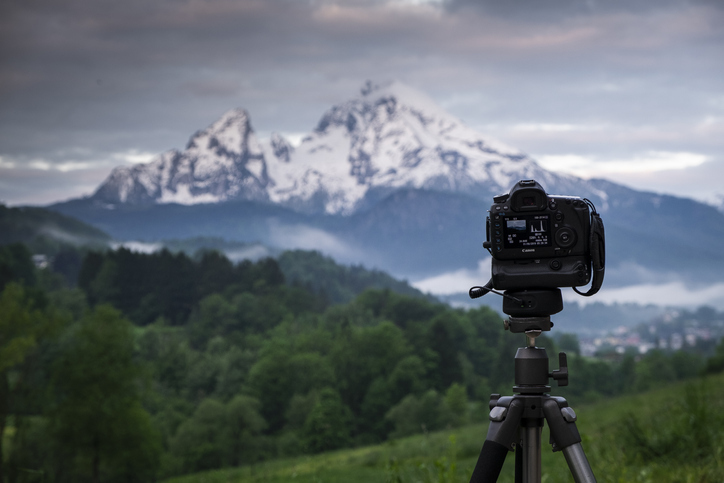- Startseite -
- Digital Bavaria -
- Blog #bytevaria - Famous Bavarian painters and their works
Famous Bavarian painters and their works
Bavaria has also been setting high standards in the area of culture for centuries. The art of painting was never neglected with a variety of famous artists coming from Bavaria. Even today, culture enthusiasts can still discover countless works by famous Bavarian painters in picture galleries and museums throughout Germany. While many artists from Bavaria were formative for the different stylistic eras within Germany, some painters also achieved international fame and reputation. Find out here which inspiring artists came from Bavaria and what influence they had on history and art styles.
Masters of Baroque: the Asam artist brothers
The baroque works of the famous artist brothers Cosmas Damian and Egid Quirin Asam can be found all over Bavaria. The two brothers primarily decorated churches and monasteries, working extensively as architects, sculptors, painters and stucco artists. Among the most impressive works by the two Bavarian artists are definitely the Asam Church and Asam House in Munich. The magnificent design of the interior of the church in Sendlinger Straße is an overwhelming sight. The talent of the Asam brothers is also reflected in the frescoes of Freising Cathedral and in the design of the Weltenburg Monastery church.

A world famous Renaissance painter: Albrecht Dürer
One of the most important artists from Bavaria is Albrecht Dürer. The pioneer born in Nuremberg not only achieved fame as a painter, he was also known in Europe as a mathematician, graphic artist and art historian. He is therefore to thank for significant advances in the development of copperplate engraving and woodcut. He gave the latter the status of a work of art in its own right, which now no longer served only for book illustrations, but could be put on an equal level to a painted picture. Dürer was also the pioneer in systematically marking his prints with monograms – an act of indicating the author that was soon copied by many. His most famous paintings include:
- Praying Hands
- Knight
- Young Hare
- Melencolia I
- and Death and the Devil

Lucas Cranach’s family legacy
Another representative of the Renaissance was Lucas Cranach the Elder. As a painter, graphic artist, printer, entrepreneur and politician, he showed multiple facets and is therefore considered the embodiment of the ideal man for his era. Born in 1472 as one of four children, he learned his craft and the art of painting through the teaching of his father, Hans Maler. During his stay in Vienna he renamed himself Lucas Cranach after his home town. From 1505 he was engaged by the Saxon elector Friedrich III as court painter in Wittenberg. A few years later, together with Albrecht Dürer, he illustrated the prayer book for the Emperor of the Holy Roman Empire, Maximilian I. The painter from Bavaria is best known for his portraits. Courtly, ecclesiastical, but also bourgeois clients adorn his oil paintings. Later he also specialised in pictorial themes with religious and mythological content. In his Wittenberg workshop he also developed faster painting techniques and more efficient work processes, which is why his tombstone is also adorned with the inscription “pictor celerrimus”, translated as “fastest painter”. His two sons were also involved in the work in the workshop and there are still countless treasures and works by the famous painter family to be discovered in twelve towns in Bavaria. You can follow in the footsteps of the Cranachs from Kronach via Coburg, Nuremberg and Eisenach to his resting place in Weimar.

Between humour and idyll: the Biedermaier painter Carl Spitzweg
Another important painter in Bavaria was Carl Spitzweg from Unterpfaffenhofen near Munich, who came from the upper middle class. The artist from Bavaria only devoted himself more intensively to painting after completing his studies in pharmacy. His art was strongly influenced by the Biedermeier period at first and leaned towards Impressionism towards the end of his life. His complete works, however, consisting of about 1,700 paintings, watercolours, drawings and humorous sketches, are officially assigned to the late Romanticism period. In his paintings he caricatured the longings of the petty bourgeoisie first of all and then focused on painting landscapes later on. Today, the famous Bavarian painter is considered one of the most influential German artists of the 19th century and an important member of the Munich School of Painting. His most famous paintings include the following works:
- The Poor Poet
- The Bookworm
- The Cactus Lover
- The Eternal Bridegroom
- The Butterfly Catcher
- Sunday Stroll
- The Intercepted Love Letter
Are you interested in Bavarian culture? In addition to art, music is also an essential part of tradition in Bavaria. Read more now about typical Bavarian musical instruments.


Chicago/Planegg-Martinsried: the US-based Proteintech Group triples the size of its site in Bavaria – with a key focus on research & development, production and logistics

How a passion can transform into a successful business


![[Translate to English:]](https://ik.imagekit.io/sgliwi1izsz/media/images/team_2021/mitarbeiter/Hr.Julian.Hechler_klein_V1.jpg?tr=w-1024 1024w, https://ik.imagekit.io/sgliwi1izsz/media/images/team_2021/mitarbeiter/Hr.Julian.Hechler_klein_V1.jpg?tr=w-1280 1280w, https://ik.imagekit.io/sgliwi1izsz/media/images/team_2021/mitarbeiter/Hr.Julian.Hechler_klein_V1.jpg?tr=w-1536 1536w, https://ik.imagekit.io/sgliwi1izsz/media/images/team_2021/mitarbeiter/Hr.Julian.Hechler_klein_V1.jpg?tr=w-1920 1920w)